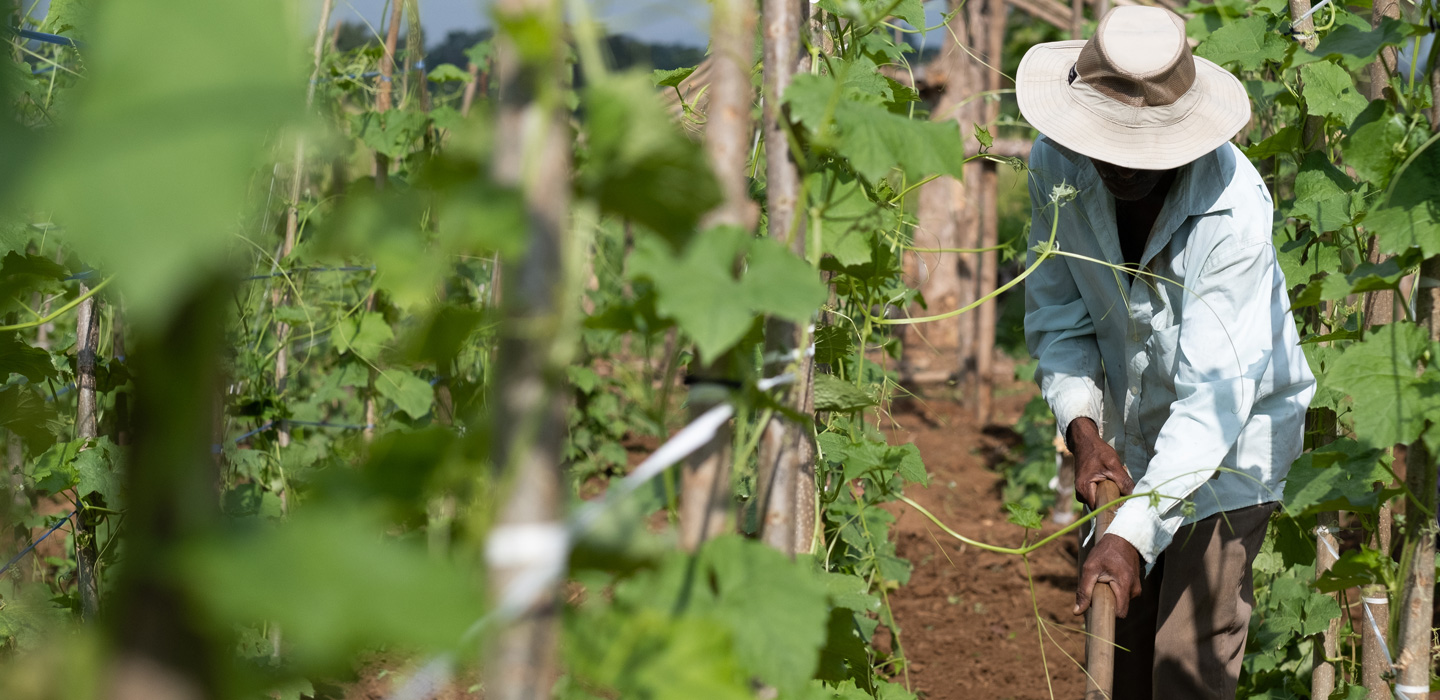Why climate finance matters: Your questions answered
IFAD Asset Request Portlet
Asset Publisher
Why climate finance matters: Your questions answered
Estimated reading time: 4 minutes
There is a lot that goes into determining how to pay for the costs associated with climate change.
In 2015, at the 21st United Nations climate change conference (COP21), nearly all of the world’s countries committed to Nationally Determined Contributions (NDCs) – a climate action plan to cut emissions and adapt to climate impacts.
Domestically, countries also engage in national adaptation planning (NAP) to assess their vulnerability to climate change and identify and implement the best ways to help them adapt.
But commitments to act are not enough – they must be underpinned by funding.
Naturally, this generates debate. How much funding is needed? Where should it be spent? The answers to these questions will affect our planet’s well-being and prosperity for years to come.
Climate finance is a complicated matter, and we get a lot of questions about it. Here are the answers to a few of the most recurring ones.
What is climate finance and why does it matter?
Climate finance is funding at the local, national or transnational level that supports the actions needed to combat climate change. It affects everything from national policy to the ground-level changes that make concrete differences in peoples’ lives. These funds may be drawn from public, private or alternative sources.
Climate finance is needed both to mitigate emissions and to help communities and economies adapt to the changes that are now inevitable. If greenhouse gas emissions are not reduced immediately, it won’t be possible to limit warming to 1.5°C, or even 2°C, putting the world on a catastrophic path. Meanwhile, climate change is already having devastating effects on people, nature and infrastructure.
In the Paris Agreement, it was decided that developed countries would provide financial resources to help developing countries meet their NDCs, pay for mitigation and adaptation, and mobilize more climate finance.
However, the commitments made so far are still insufficient to meet the Paris goals. This is particularly true for smallholders, who receive just US$10 billion, or 1.7 per cent, of climate finance – a fraction of the amount needed.
How much climate finance is needed for mitigation and adaptation?
Climate finance helps countries meet their NDCs and implement their NAPs. Making adequate finance available is therefore crucial to making progress towards the Paris goals.
Developed countries need to finance at least US$100 billion a year towards these ends. This includes closing finance gaps for both mitigation and adaptation. The estimated global gap for adaptation is large and widening. Adaptation costs in developing countries are expected to rise to up to US$340 billion a year by 2030, and up to US$565 billion by 2050. The gap for mitigation is even larger, at US$850 billion per year by 2030.
If we hope to limit warming to 1.5°C, we need to bring global emissions to net zero by mid-century by accelerating the coal phase-out, ending deforestation and promoting reforestation, switching to electric vehicles and investing in renewables. This shift will require trillions in public and private finance.
As we come out of the COVID-19 pandemic, is climate finance for smallholders really what we should be investing in?
Absolutely. COVID-19 hit small-scale rural producers hard, reducing incomes and increasing food insecurity. Climate change is hitting them harder still.
Increasingly frequent extreme weather events are damaging livelihoods and disrupting food systems for people with little or no financial cushion against severe shocks.
Small-scale farmers produce 60–80 per cent of the food in developing countries. If global yields fall, millions will be at risk of food insecurity and malnutrition. This in turn could lead to social unrest, conflict or forced migration, among other things.
Small-scale producers are the foundations of food systems and the custodians of ecosystems. With the funds and tools to adapt, they can sustainably manage environments and help countries meet their Paris commitments through agroecology and nature-based solutions.
How can climate finance be channelled most effectively to small-scale producers?
We need public-private collaboration to mitigate the risks associated with investments in agriculture and to leverage additional financial resources. Bridging the financing gap will require us to use public climate resources to find innovative ways to engage private sector investment.
Public resources can be channelled directly to governments, national institutions and civil society organizations, which can provide services such as subsidized loans for producers that are conditional on the use of climate-smart practices, subsidies for weather insurance, and innovative fiscal transfer instruments. These practices can make investments less risky and more attractive for private sector entities.
How does IFAD mobilize climate finance?
To date, IFAD has committed US$990 million in climate finance across 70 projects. With another US$300 million from our donors, we’ve channelled climate and environmental finance to 6 million vulnerable producers in 41 countries through our ASAP programme. Its enhanced version, ASAP+, will mobilize another US$500 million. Our core programme of loans and grants aims to mobilize US$800 million from the private sector over two and a half years.
Our partnerships are crucial to getting climate finance to the small-scale producers who need it. IFAD is accredited to the Adaptation Fund, Green Climate Fund and Global Environment Facility. We secured US$283.6 million from these funds between 2019 and October 2021. This represents significant progress towards our goal of securing US$500 million in supplementary climate finance as part of our climate change Action Plan.
Publication date: 11 November 2022